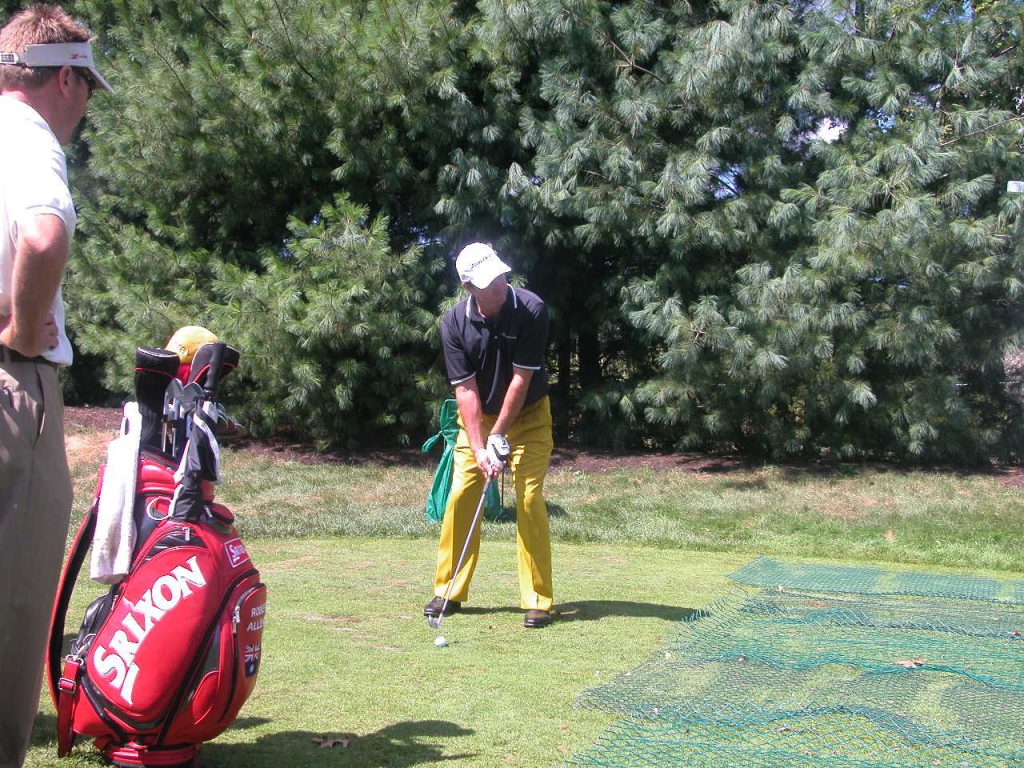Numerosity: How You Judge Distance

by Dr. T. J. Tomasi, Keiser University College of Golf Senior Faculty and Director of Research
In our everyday lives, numbers play a big role – they are so important that there is an entire area of your brain devoted to answering this basic question – how many? Ben Harvey, a neuroscientist at Utrecht University in the Netherlands, has shown that there is a region of the brain with special number cells, each one dedicated to a single number, i.e., 1, 2, 3, or 8, etc.
“When we see a small number of items visually, we don’t need to count them,” Harvey says, “We just know how many there are straight away.” The max before the normal brain must start counting is around 8, after which you’re guessing – which is why pros and their caddies, before tee-off, physically count the clubs in the bag to make sure they stay within the 14-club limit in tournament play.
Interestingly, some humans (although very few) can “see” much larger numbers. In his book The Man Who Mistook His Wife for a Hat, Oliver Sacks demonstrated the following encounter with a set of twins:
“A box of matches on their table fell, and discharged its contents on the floor: ‘111,’ they both cried simultaneously… I counted the matches — it took me some time — and there were 111. How could you count the matches so quickly? I asked. “We didn’t count them,” they said, “we saw 111.”
Perhaps we all have such a wondrous power of instant numerosity running sub-rosa, but it is obscured by the luxuries of everyday life where the use of technologies like range finders and calculators mute our natural powers.
But why did ‘seeing numbers” survive evolution’s stringent vet to occupy a portion of the most expensive real estate on the planet – your brain? No one knows, but we do know that evolution only keeps what we need, so it may be we use the ability to ‘see’ numbers without counting to instantaneously figure out distance – it’s far too time consuming to count yards when a deer flashes out of a thicket. And 10,000 years ago, if the four of us suddenly came upon a band of 15 other humans, it’s automatic – run. In both cases, instant numerosity allows you to survive and pass your genes on.
So it may be that instant numerosity is part of how we judge the distance to the pin. If you know what a yard looks like (one golf stride) and you know what 10 yards look like, then you could ‘see’ 100 yards without having to calculate it.
Is this important? Here is what one tour player told me: “The guy who is the best from inside 100 yards is hard to beat. Look at (2012 US Open champion) Webb Simpson. There are 50 guys in the field here who hit it better than Webb, and not one of them can beat him on a regular basis.”
You learn to ‘see’ distance, and while this will come as no surprise, good players with experience ‘see’ distance better than average players because their numerosity is better.
Thus, an important part of planning and processing each shot involves accessing the brain area that houses numerosity as part of your pre-shot routine, i.e., what the numbers look like as a visual scene. As the twins would say: “we don’t count numbers; we see them.”

A player learns to see numbers (e.g., 75 yards) as a mind-scene that triggers the shot shape, the choice of club, and the integration into the calculation of factors such as wind velocity and lie- all of which alter the actual distance the eye sees to the target.
If you’d like to study with Dr. Tomasi and other PGA Master Professionals, contact The College of Golf today.












